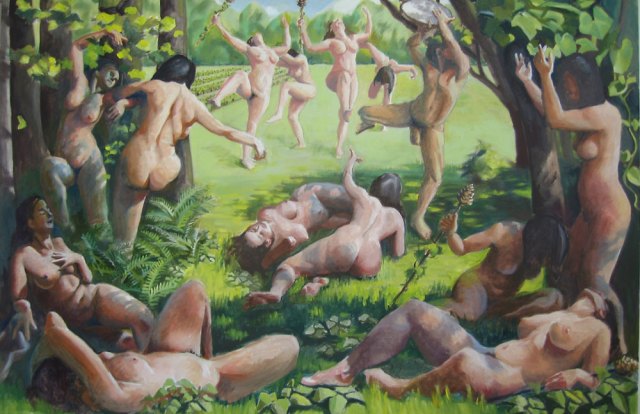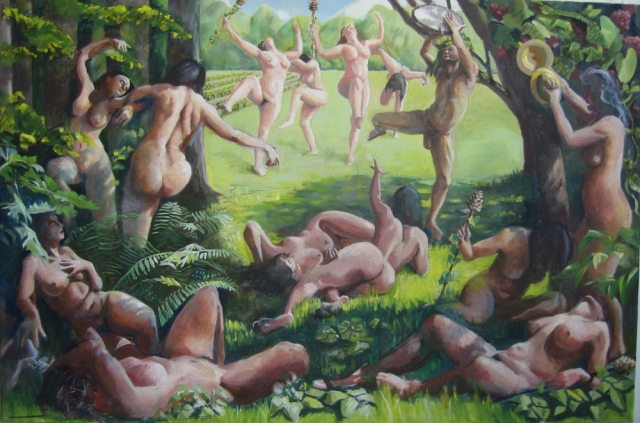Here is the last picture in this blog. Click on this image to enlarge it, or to see it full size come to the Open Studio that will be taking place at 315 W. 39th St. Studio 810 on May 9-10-11 from noon to 7 PM.
Ephraim Rubenstein has provided two last indispensable consultations on the many changes in the landscape that bring it together. Marissa, a model Ephraim knows from the League, helped me to finish the blonde and brunette heads and the hand that extends from the right-hand dancer of the whirling couple. That hand has been a problem from the beginning, since it was drawn from a model standing still. Marissa obligingly whirled arm-in arm with me until we could figure out what gesture that movement imparts to the outboard hand.
The head of the cymbalist is finally shaded by a bower of grape leaves whose light I got from an old painting of my daughter Jessica sitting in a grape arbor (see post for Feb. 5, 2011 #3A)
There are only two faces whose expressions are fully visible — the first dancer on the left and the god. They are at the beginning and end of the arcs of movement in the piece. A full face anywhere else would arrest your eye, and I want you to keep moving around in this dance.
But speaking of the face of the god, I am learning about that from an interesting book, Masks of Dionysus edited by C. H. Carpenter and C. A. Faraone. This was a god unlike any other in the classical world. He was sometimes painted full-face on Greek pottery – a large head engaging the viewer, whereas other faces were painted in profile. This was consistent with his way of appearing as a man and dancing with his devotees, a very un-Olympian kind of manifestation. And in the ritual of drama, of which he was the original patron deity, the masks of the actors are the means by which they become personally present as characters to the audience.
There is debate about how much sex was involved in the cult as originally practiced — especially since the rites for men and for women were generally separate. But drinking wine in remembrance of his gift of it to mankind was part of the cult, and in many other ways — incarnation, sacrifice and resurrection for example — he is a kind of prototype for the personal relationship to divinity that we have come to seek in later millennia.

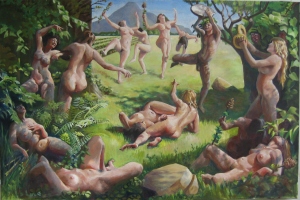
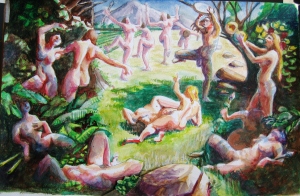
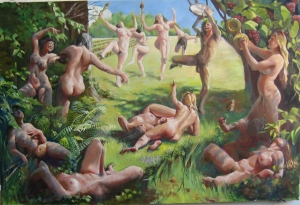
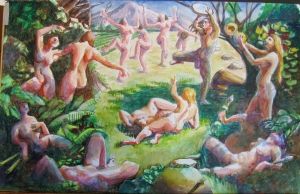
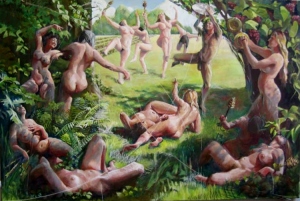
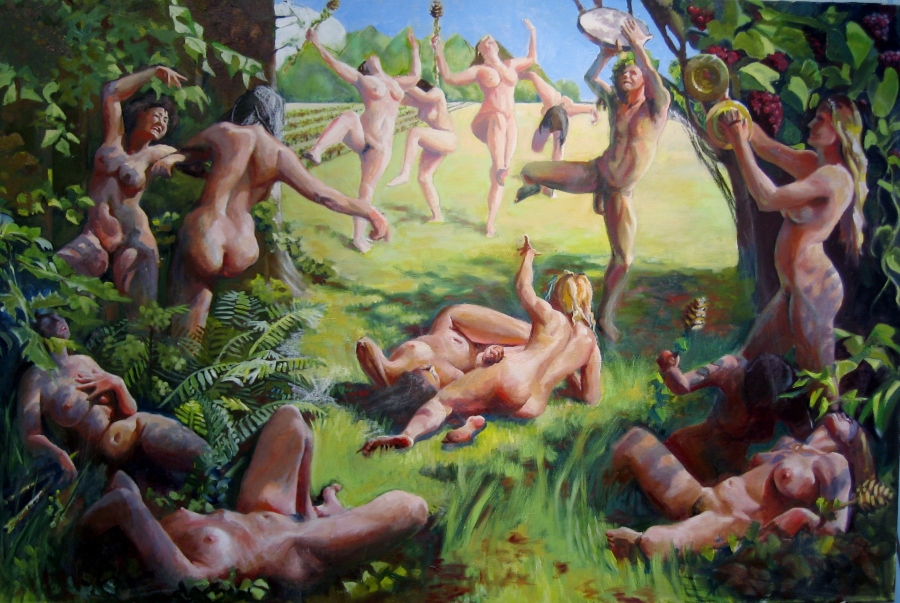



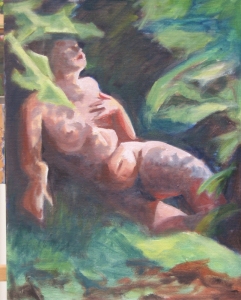

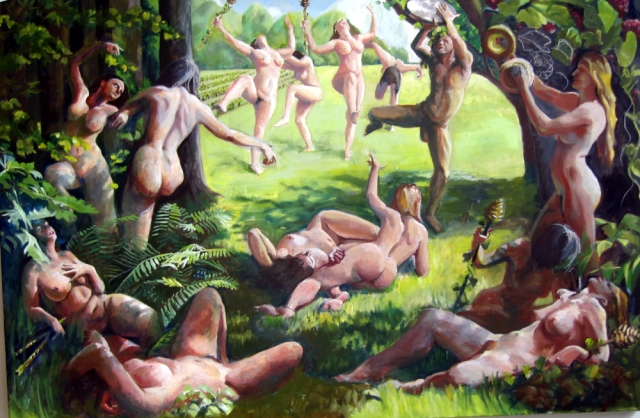
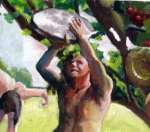 Here is Dionysos with some reflection from his shoulders.
Here is Dionysos with some reflection from his shoulders.


